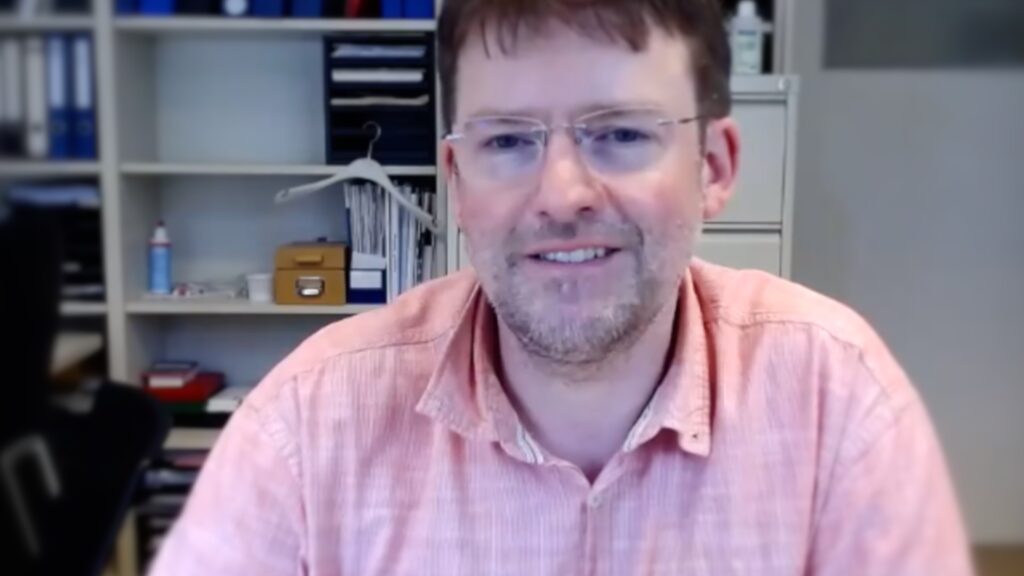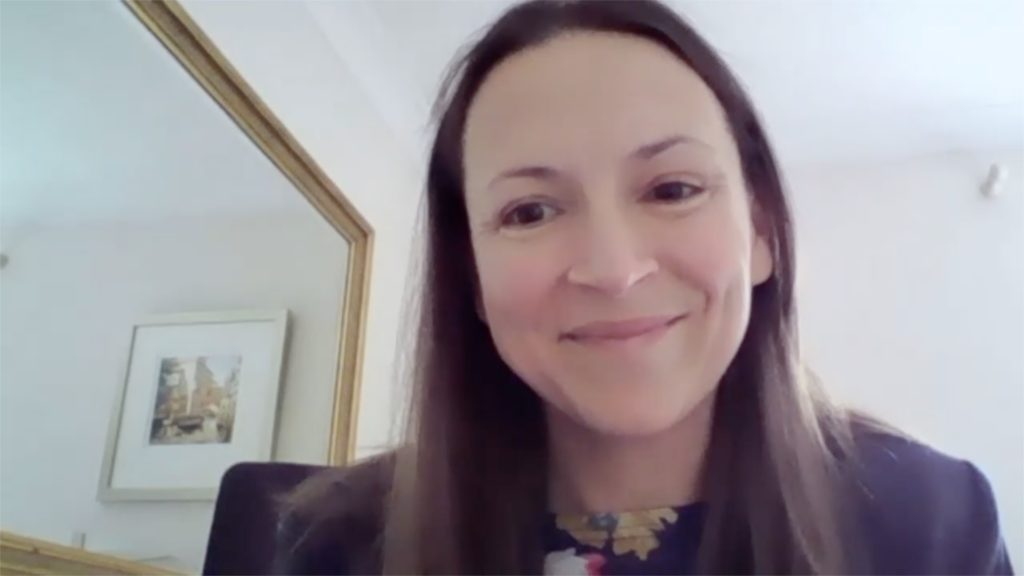Antibody-cytokine fusion proteins are a promising immunotherapy that could overcome off-target immune cell activation and the short serum half-life associated with low-dose interleukin-2 treatment. We were delighted to talk with Dr. Jamie Spangler (Johns Hopkins University, Baltimore, MD, USA) around the rationale for fusing cytokines to anti-cytokine antibodies in targeted therapy, the improved therapeutic efficacy and minimised toxicities and adverse events associated with these fusion proteins and the potential markers for tumour-selective targeted delivery.
‘Tumor-selective delivery of immunostimulatory cytokine/antibody fusion proteins’ was presented at AACR 2023, April 14-19, 2023.
Questions
- What is the rationale for fusing cytokines to anti-cytokine antibodies in targeted therapy? (0:15)
- How do fusion proteins improve the therapeutic efficacy of the cytokine payload? (1:35)
- Could you describe what markers could be used for tumour-selective targeted delivery? (2:56)
- How will tumour-selective delivery help to minimise therapy related toxicities and adverse events? (4:12)
- What clinical data surrounds antibody-cytokine fusion proteins? (5:08)
Disclosures: Jamie Spangler has nothing to disclose in relation to this video interview.
Support: Interview and filming supported by Touch Medical Media Ltd. Interview conducted by Victoria Jones.
Filmed in coverage of the 2023 AACR Annual Meeting.
Click here for more content on immuno-oncology.
Transcript
What is the rationale for fusing cytokines to anti-cytokine antibodies in targeted therapy? (0:15)
We’re really excited about this landscape, which really hasn’t been explored at least very much from a clinical perspective yet and what that is, is basically the idea that an antibody can serve as a mask or a selective mask, selectively biasing the cytokine towards certain cell types and this is actually a really powerful technique, particularly in the interleukin 2 or IL-2 case, because for IL-2, it actually signals through three different receptor subunits. There’s three different nodes or three different dials that you can turn in terms of its relative affinity and relative interaction with those different subunits to get selectivity against cells that express different levels of those different receptor proteins. So instead of trying to just use the cytokine itself as a payload and then direct the specificity with the anybody. Now you’re binding intramolecularly and having the cytokine engage with the antibody itself and then have that antibody sort of selectively directed specificity.
How do fusion proteins improve the therapeutic efficacy of the cytokine payload? (1:35)
That really kind of follows from the last point, which is that, you know, antibodies have very favourable properties as drugs in terms of their pharmacokinetics and in terms of the way in which they’re bio-distributed throughout the body and also the fact that pharmacologically they’ve been used for many years and actually make up a large portion of the biologics market at this point. So, you have a known entity that is therapeutically useful that’s guiding your cytokine payload. In addition, they have, you know, the extended half-life through the FC neonatal receptor mediated recycling that allows them to stick around longer in the bloodstream rather than having to continuously infuse the cytokine at very high doses. So, it really helps from a dose tolerability standpoint and also from a longevity standpoint and also antibodies in general have the drug like properties that cytokines lack in terms of their pleiotropy and also their difficulties in expression formulation.
Could you describe what markers could be used for tumour-selective targeted delivery? (2:56)
In our technology, what we did was we actually took the antibody cytokine fusion protein, and we direct and retain that in the tumour by targeting collagen. So, collagen is aberrantly exposed in the tumour microenvironment at very high levels and so when you actually inject, we take advantage of intratumoral injection but if you inject intratumorally, you can actually favour keeping the cytokine and retaining the cytokine in the tumour microenvironment. So that’s been, you know, one of the major benefits of the molecule that we’ve developed in terms of the fusion to a collagen binding domain. The collagen binding domain we’re using is the A3 domain of Von Willebrand factor, which is, you know, a relatively small and well expressed domain that does not add too much bulk to the molecule and still allows the molecule to retain its favourable pharmacological properties.
How will tumour-selective delivery help to minimise therapy related toxicities and adverse events? (4:12)
Yeah, so that was really a key motivator behind this technology that IL-2 therapies have been very limited in the clinic by vascular leak syndrome and other sorts of toxicities associated with the pleiotropic activities of IL-2 on both stimulating effector cells of the immune system, but then also stimulating regulatory T cells, as well as the high dose effects that are seen in terms of toxicity and so what’s nice is, first of all, the longer half-life allows for a molecule to stay around longer, but the actual tumour targeting and tumour retention prevents it from getting out into the bloodstream. You actually see zero pretty much flatline levels of IL-2 outside of the tumour, which is very advantageous when you’re thinking about a targeted therapy and preventing that from hitting anything outside of the tumour bed.
What clinical data surrounds antibody-cytokine fusion proteins? (5:08)
It’s actually an ongoing question. So, for many years it’s been known that anti-cytokine antibodies can direct the activities of the cytokines towards the anti-cancer activity or actually on the flip side, we’ve also done work and others have shown that you can actually direct IL-2 towards regulatory T cells for autoimmune or transplantation purposes. But the limitation has been that previously it was all done with antibodies and cytokines being delivered separately and the problem there is it’s not a stable entity, right or a stable complex and that can fall apart, particularly in the context when you’re delivering this in-vivo, and it gets diluted in the blood. We created the intramolecular immune-cytokine to link it together to stabilize that interaction and prevent it from coming apart so that we could make a clinically relevant entity and so that’s what the motivation behind our molecule was. Of course, our molecule is not yet in the clinic. We’re working on, you know, some follow up animal studies to move it in that direction and to ultimately get it there. But in the meantime, there’s actually a molecule developed by Onur Boyman’s group at Zurich – University of Zurich hospital and what he’s done is to actually fuse the IL-2 into one of the CDRs of an antibody that directs it, that is anti-IL-2 and directs the cytokine towards anti-tumour effects or towards stimulation of immune effector cells and that molecule actually is in a phase I clinical trial in Europe. I haven’t seen any data on it yet, but that’s exciting to see this concept of antibody cytokine fusion proteins going into the clinic.





